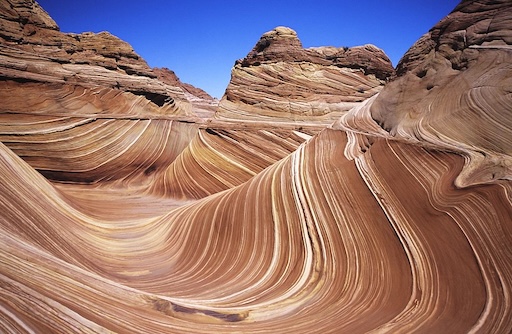
Tucked into the far reaches of the Vermilion Cliffs wilderness, right on the border of Arizona and Utah, lies a place that looks more like a psychedelic dream than a piece of Earth. The Wave—a wind-sculpted swirl of technicolor sandstone in USA’s Coyote Buttes North—isn't just a geological formation. It's a pilgrimage site for the lucky few.
And we do mean lucky. Only 64 people are allowed in each day. Yep, you heard that right. Getting to The Wave is less like planning a hike and more like winning the lottery—literally. But if you do win, you're in for one of the most unforgettable natural spectacles on the continent.
The Sandstone That Learned to Dance
The Wave was formed over 190 million years ago, when sand dunes turned to rock and then slowly surrendered to the wind. What’s left behind is a striped, undulating landscape that flows and curves like ocean waves frozen in time. The colors—burnt orange, pale cream, rusty red—shift and glow throughout the day, giving photographers, artists, and wanderers a visual playground unlike any other.
Walking through The Wave feels like stepping inside a living painting. The swirls seem to ripple beneath your feet. The rock walls echo with silence. It’s peaceful, surreal, and a little otherworldly.

The Catch: The Infamous Permit Lottery
Here’s where the dream gets a little tricky. The Bureau of Land Management (BLM) strictly limits access to protect the delicate rock. Only 64 people per day are allowed to visit—48 from the online lottery (held 4 months in advance), and 16 from the daily in-person lottery in Kanab, Utah.
That means getting a permit requires planning, patience, and a bit of luck. Some people try for years. Others score on their first try. There’s no trick—just determination. But once you do land that golden ticket, you’ll know the hike is going to be something special.
The Trek Through the Desert
Reaching The Wave isn’t a stroll in the park. It’s about a 6-mile round trip hike over rugged, trail-less terrain. There’s no signage, no facilities, and definitely no cell service. You’ll need a good map, GPS coordinates, plenty of water, and desert survival sense.
But don’t worry—it’s not extreme mountaineering. Fit hikers who are prepared for the heat and navigation can handle it. The reward? Arriving at a place that looks like it shouldn't exist on this planet.

Why It’s So Worth the Wait
There are few places on Earth where geology, art, and solitude collide so perfectly. The Wave isn’t just a visual marvel—it’s an emotional one. Visitors often describe the experience as meditative, spiritual, and humbling. There’s something about being one of only a few souls standing in this wild amphitheater of color and curves that puts life in perspective.
And the light? Oh, the light. It shifts across the stone with every passing hour, creating new moods and textures. Morning brings soft pastels, midday hits with harsh brilliance, and evening glows with deep reds and golds. It’s nature’s own light show.
Tips for Chasing This Hidden Wonder
- Permits: Required via BLM lottery. Apply online or in-person at Kanab, Utah.
- Distance: ~6 miles round-trip with no marked trail.
- Best Time: Spring and fall for milder temps. Summer can be dangerously hot.
- Navigation: GPS recommended. Bring printed map provided by BLM.
- What to Pack: Water (lots), snacks, sun protection, layers, and a sense of awe.
The Story Behind the Wave
The Wave may have been shaped by time and wind, but it was discovered by modern travelers much more recently. For decades, this sandstone gem was known only to geologists and a few in-the-know hikers. It wasn’t until the 1990s, when a few stunning photographs started circulating in magazines and on early travel blogs, that The Wave began to capture the public’s imagination.
Photographers were the first to chase it. The surreal lines and flowing colors made it a natural subject for landscapes that seemed unreal even before the rise of Instagram. Some even compared it to an alien landscape or a digital painting—except this one was 100% real.
Rock Solid Science (That Looks Like Magic)
So how did this fantasy world come to be? The Wave is made of Navajo Sandstone, a rock formed from ancient dunes during the Jurassic period. Over millions of years, wind and water sculpted those dunes into what we see today. What’s fascinating is how the grains of sand were cemented by minerals like calcium and iron, which gave the rock its swirling palette of color.
The result? A landscape that’s as much a geological wonder as it is a work of natural art. Every curve tells a story—of ancient winds, prehistoric deserts, and the patient force of erosion. And the colors aren’t just pretty; they hint at the composition of the minerals within: reds from iron oxide, yellows from limonite, and purples from manganese.
The Permit Lottery: Tales of Triumph and Defeat
Getting a permit to The Wave has become a badge of honor in the hiking community. On forums and Facebook groups, hopefuls share tales of submitting applications for years—dozens of times—with no luck. Then there are the lucky ones who win on their first try and feel like they’ve drawn the golden ticket from Willy Wonka.
One hiker from Colorado recalled driving 10 hours to Kanab just to enter the daily in-person lottery. “It was my third attempt,” she said. “I didn’t get picked the first two days. But on day three, boom! My number was called. I cried in front of total strangers.”
Some visitors even treat the trip as a family tradition. “My dad tried for five years before he finally got us in,” wrote another. “We camped nearby the night before, and when we saw the rock in person, it was like all the waiting melted away. Totally worth it.”
Best Photo Spots Inside The Wave
- The Main Chamber: The most famous “wave” section, with deep red and orange curves that flow like lava.
- Second Wave: Just beyond the main area, this spot features sharper ridges and steeper patterns.
- The Alcove: A shaded pocket with a dome-like ceiling—perfect for framing photos.
- Reflections (after rain): Puddles after rare rainfalls can create stunning mirror effects on the rock.
Pro tip: get there early in the day to catch the low-angle sunlight that brings out the layers and shadows. But even at noon, the glowing effect remains magical.
If You Don’t Win the Lottery…
Not everyone gets lucky—but don’t let that ruin your trip. The surrounding region is packed with otherworldly landscapes that don’t require a permit. A few favorites:
- White Pocket: Often dubbed "The Wave’s cousin," this remote formation is accessible with a 4x4 and features psychedelic swirls of white, pink, and orange stone. No permit needed.
- Toadstool Hoodoos: A short hike from Highway 89 leads to bizarre mushroom-shaped rocks straight out of a cartoon.
- Buckskin Gulch: One of the longest slot canyons in the world. Narrow, twisty, and deeply mysterious.
These spots offer a similar sense of awe—and often with zero crowds. So even if The Wave remains elusive, the wonder of northern Arizona’s desert won’t disappoint.
A Final Whisper from the Desert
There’s a reason why The Wave has become a legend among adventurers. It’s not just the beauty—it’s the effort required to reach it. In a time when so many places are just a Google Maps pin away, this one still asks for patience, luck, and respect.
And maybe that’s the real magic. It’s not about just seeing something extraordinary. It’s about earning it.
So, whether you win the permit this year or try again next spring, keep chasing. The desert has secrets. And some are worth waiting for.
Share this story and inspire others.
Tags: The Wave Arizona, Coyote Buttes North, sandstone wave, surreal rock formation, Arizona hiking permit, USA hidden wonders
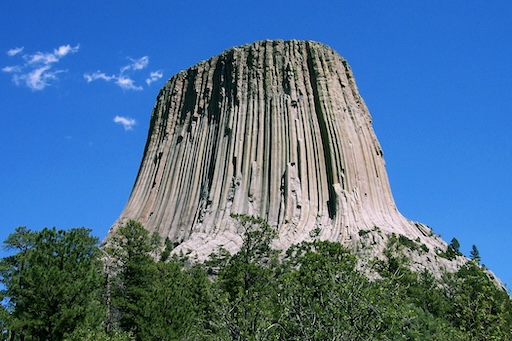 Devils Tower – Wyoming`s Sacred Monolith and Sci-Fi Icon
Devils Tower – Wyoming`s Sacred Monolith and Sci-Fi Icon
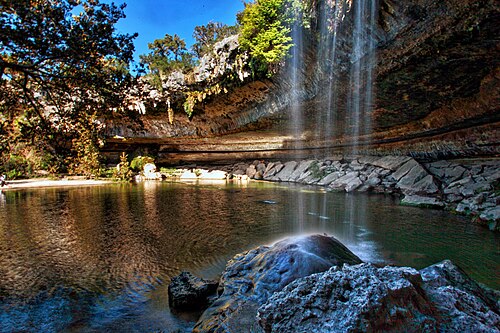 Hamilton Pool Preserve – Hidden Waterfall Oasis Near Austin
Hamilton Pool Preserve – Hidden Waterfall Oasis Near Austin
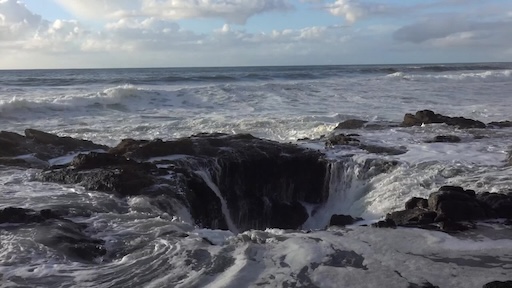 Thor’s Well – Oregon’s Ocean Drainhole That Breathes with the Sea
Thor’s Well – Oregon’s Ocean Drainhole That Breathes with the Sea
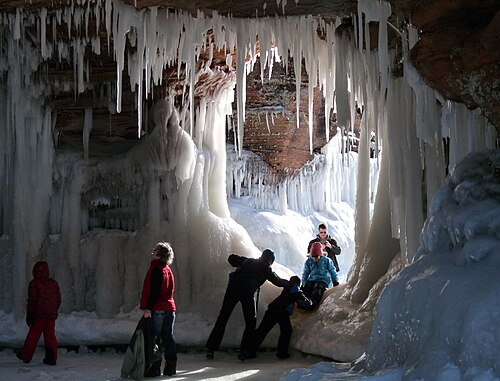 Apostle Islands Ice Caves – Wisconsin’s Frozen Cathedral on Lake Superior
Apostle Islands Ice Caves – Wisconsin’s Frozen Cathedral on Lake Superior
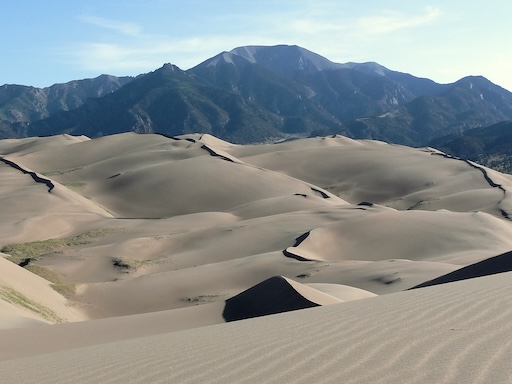 Great Sand Dunes National Park – Colorado’s Surreal Desert at the Foot of the Rockies
Great Sand Dunes National Park – Colorado’s Surreal Desert at the Foot of the Rockies
 Skagit Valley Tulip Fields – Washington’s Springtime Dutch Fantasy
Skagit Valley Tulip Fields – Washington’s Springtime Dutch Fantasy